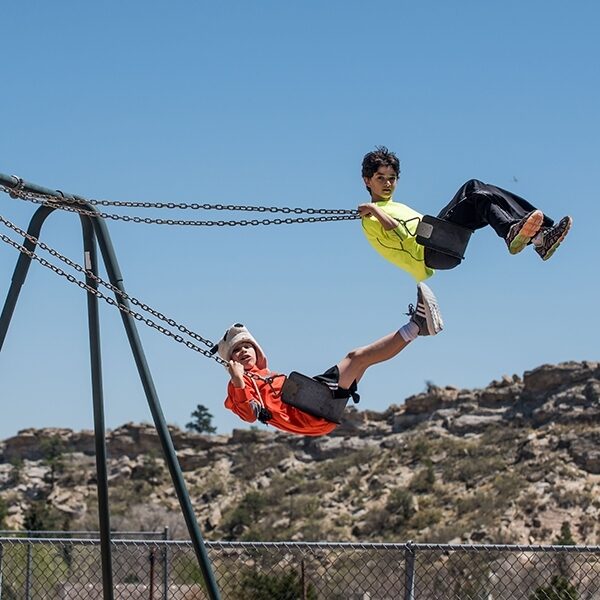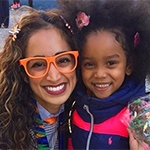
Confronting a sea of stares, my hands were sweaty. Every thought ran through my mind while I slowly opened my tri-fold poster board entitled, “The Beauty of India.” Why am I presenting this? Do people want to hear what I have to say? Will I fit in? Is the teacher just trying to fill up time? Am I the right person to talk about this? Will people think I’m weird? There isn’t anyone else that looks like me. They don’t want to hear me. I don’t fit in. I am not enough.
I asked a teacher once, “What does it mean to be culturally responsive in the classroom?” Their response was simple: “To have diversity in the classroom. To present differences.” I cringed. It brought me back to the moment where my teacher wanted me to feel like “a part of the community” by presenting “my country” to my peers. In that moment, I felt confused about why I was completing this task and wondered if my “minority card” was being revealed. You see, when you spend your entire life assimilating, the thought of sharing your identity feels like you’ve been caught, not empowered. It falls flat when there is no “why,” or no greater purpose for deeper connection.
Diversity is important, but what good is it without inclusivity? What makes someone willing to share their most vulnerable self at any age? And how do we create conversation around cultural differences that highlights opportunities for resonation and appreciation? Indeed, curiosity does NOT need to kill the cat. Curiosity can connect the cat and bring about knowledge, empathy, and understanding.
Case in point: last year, I had the honor of teaching a kindergarten class that represented over 13 countries and 8 languages. I recall an experience in the first few weeks of school during recess, and recess was a BIG DEAL. You probably remember it well – that time period where you start to make assumptions about others and decisions about who you’ll play with, who might share their snack with you, or who rides the bus and will always save you a seat. I observed my students’ interactions, body language, and the creative games they constructed based on their interests.
Out of the corner of my eye, I witnessed an interesting interaction between two of my students. One boy identified as white (for the purposes of this story, we’ll call him Colin), and the other boy identified as Punjabi-Indian – we’ll call him Jagat. Colin was quietly observing the “patka” and “kada” that Jagat was wearing and asked him directly, “Why do you wear that?” Jagat was stunned – mainly because he had recently moved to the United States and was accustomed to a community that shared his cultural beliefs. Just then, the whistle blew, and the class quickly lined up.
How would I approach this? Flashbacks of my own elementary school experience were at the forefront of my mind like triggers. I thought about the moment where a teacher would chide a student like Colin for being impolite or might tell him, “You’re making them feel uncomfortable!” A teacher might reduce the conversation down to a familiar phrase: “We are all different.” These solutions didn’t solve the problem; in fact, they were the very antithesis of creating opportunities for inclusion – the reason I further felt isolated growing up.
We arrived in the classroom and before I had the opportunity to connect with Colin and Jagat, and Colin ran up to me and whispered, “Ms. Kumar, why does Jagat wear that?” I was relieved and motivated. Colin could have taken the moment to make an assumption based on a difference he observed, and yet he remained curious – engaged, even! Could you imagine if we all could come from a place of curiosity versus assumption? Oh, what a world it could truly be!
I honored Colin’s curiosity. The execution of the question he’d asked Jagat at recess may have not come out the way he wanted, but he was five years old, and isn’t it our responsibility to equip young children with the tools and resources to approach questions like this? How can we learn if not through the mistakes and experiences that teach us otherwise?
So, we practiced how Colin could approach this topic again. Jagat soon came over, and I asked him if Colin could ask him a question. Jagat felt a little uneasy, but I assured him we were all learning together. Jagat knew the names of what he was wearing but struggled to explain their purpose. The three of us grappled with the best way we could ensure we were learning to our fullest potential – about ourselves and each other. Collectively, we decided to ask if Jagat’s mother could help us in answering some questions that Jagat would then share with Colin. The students then asked if they could share the information together with their peers during our social-emotional learning “circle time.” This felt authentic. The students were driving their learning and their understanding of the world, and they had a say in how to navigate unfamiliar situations where they might not understand the “rules.”
I was grateful for the support of Jagat’s mother. She and I spoke over the phone, and she talked about her wishes for her son in school – especially in today’s society. She wished for him to feel loved, accepted, and empowered. He was only five, but he was already empowering 33 little ones in our class alone with his courage to speak up and share – and he was getting to know the “why” behind his sharing.
“Circle” time arrived quickly that Friday morning. The students sat in a circle where we worked on closing our eyes, relaxing our bodies, and tuning into our breathing. Each child introduced themselves, shared a feeling and their work for the day, and then introduced the person sitting next to them. As I waited with anticipation, Jagat’s turn finally came around. “My name is Jagat,” he began. “I am feeling nervous and excited. I have work today. And this is my friend Colin.”
At this point, I addressed the class to prepare them for what they were about to hear. “Today, we are going to talk about the importance of asking questions,” I explained. “Look around you. Every single person in this room has a story. Maybe you moved from another country, maybe you speak three languages, maybe you have siblings. We all are incredibly different, yet all share many things in common: the ability to care for another, the ability to love another, the ability to ask each other questions. Today, Jagat and Colin have shown tremendous courage in sharing their story.”
Colin then stood up and shared his story. Many students silently began to show their agreement when he spoke around his curiosity. Jagat then stood up, and before he began, the class sent “silent love” into the space he was about to step into. As a teacher, the hope you have for every child is that you’ve facilitated a space for understanding, growth, love, and inclusivity. When he began to share his story, those little four- and five-year-old faces were filled with interest and excitement.
“I wear my patka because it represents my home, family, and culture,” Jagat said. Once again, many students began to show their agreement – a little girl with a hijab, a young boy with a cross necklace. Slowly, students were creating multiple human connections through the story of one. When the time came for the class to show resonation and appreciation, I cannot even begin to express how many hands went up. Jagat stood in the middle of the circle, and one by one, students shared a personal anecdote around how their story connected to his or how his story gave them the confidence to share and be proud of their heritage.
What happened between Colin and Jagat would have unraveled very differently for me growing up. Either the moment would have been glanced over or the responsibility for teaching would have been awkwardly placed on me in the form of a random project board. But here, these young boys decided on their own if and how they wanted to share and take ownership. Colin even emphasized in the circle the importance of tone and execution of questioning another. “I didn’t know how to ask Jagat, and I may have hurt his feelings when I did it at recess,” he shared. “I apologized because I really wanted to know and Jagat is my friend. We have to ask questions! But we also have to ask with kindness.”
If there is ever a moment to honor differences, take the time to do so in your classroom, in your school, in your community, with your friends, or with strangers. Respect this opportunity. Our world is changing, and it is our responsibility to create safe spaces so that future generations know how to communicate about themselves, approach each other with kindness, and open up doors for greater understanding.

